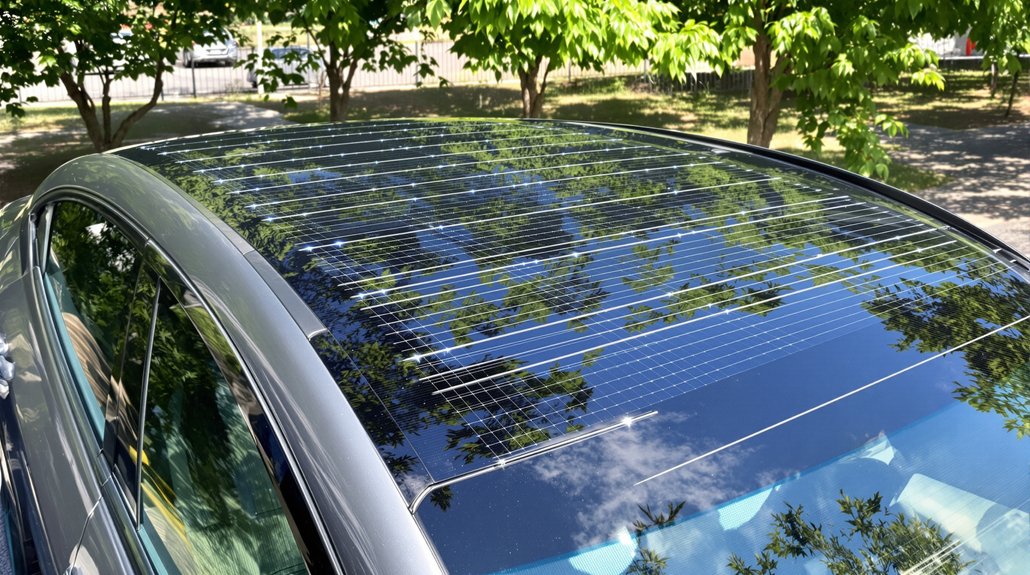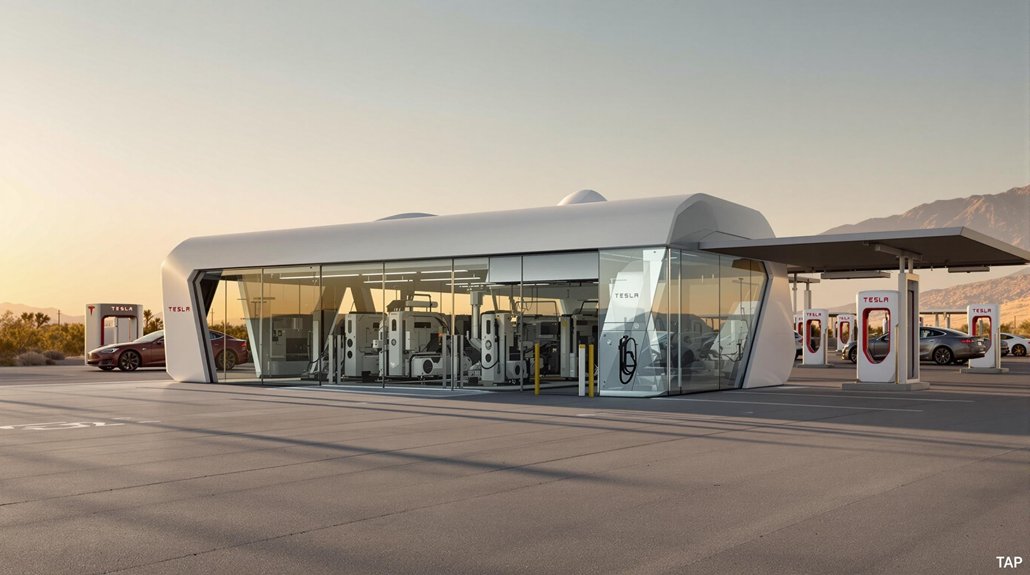While conventional car roofs have done little more than keep rain off passengers’ heads, a transformation in automotive design is changing that passive relationship forever. AGC Automotive Europe recently announced they’re ready to mass produce solar panorama roofs by August 2025. Not a moment too soon, if you ask me.
These aren’t your dad’s clunky solar panels. Modern car roofs utilize high-efficiency back contact solar cells reaching at least 25% efficiency. They look good too—uniform black aesthetics that blend seamlessly with tinted glass. No more “bolted-on science project” vibes.
Today’s solar panels deliver 25% efficiency with sleek aesthetics—no more science projects stuck on your car roof.
The numbers are impressive. Depending on the vehicle, solar roofs yield between 2 and 43 miles of daily range. Hyundai’s Sonata Hybrid adds about 2.5 miles per day with its modest 205-watt array. Fisker claims 1,500 miles annually. And Lightyear’s design? A whopping 43 miles daily from solar alone. That’s practically a free commute.
Manufacturers aren’t stopping at roofs. Hood, dashboard, rear hatch, doors—all fair game for solar integration. Aptera showcased this approach with their production-ready solar electric vehicle at CES 2025. Their molded carbon fiber structures reduce parts by 90% compared to conventional vehicles. Efficient and practical.
These systems work with both low and high-voltage battery setups, making them adaptable across platforms. Toyota, Hyundai, Fisker—they’re all in. Even aftermarket kits promising 60 additional miles per day are under development. With solar costs having decreased by 80% since 2010, these automotive applications are finally becoming economically viable.
Beyond the obvious environmental benefits, solar roofs offer tangible advantages. Lower electricity bills. Reduced grid dependency. Emergency power capabilities. AGC’s design provides up to 30 mm more headroom than traditional sunroofs while being lighter weight. With Aptera’s unique solar system providing up to 40 miles of daily range, they transform cars from energy consumers to mobile power generators.
The technology has finally crossed that critical threshold—solar roofs that actually make sense. With mass production beginning next year, the days of cars being mere transportation appliances are numbered. Your next vehicle might just power itself. Rain or shine.
References
- https://www.pv-magazine.com/2025/08/21/agc-automotives-solar-roof-for-passenger-cars-is-ready-for-mass-production/
- https://inspenet.com/en/noticias/aptera-unveils-first-production-ready-solar-electric-vehicle-at-ces-2025/
- https://www.consumeraffairs.com/solar-energy/solar-panel-cars.html
- https://lightyear.one/articles/driving-the-future-lightyears-solar-panel-technology-for-automotive-applications
- https://justenergy.com/blog/electric-cars-with-solar-panels-how-they-will-revolutionize-driving/








